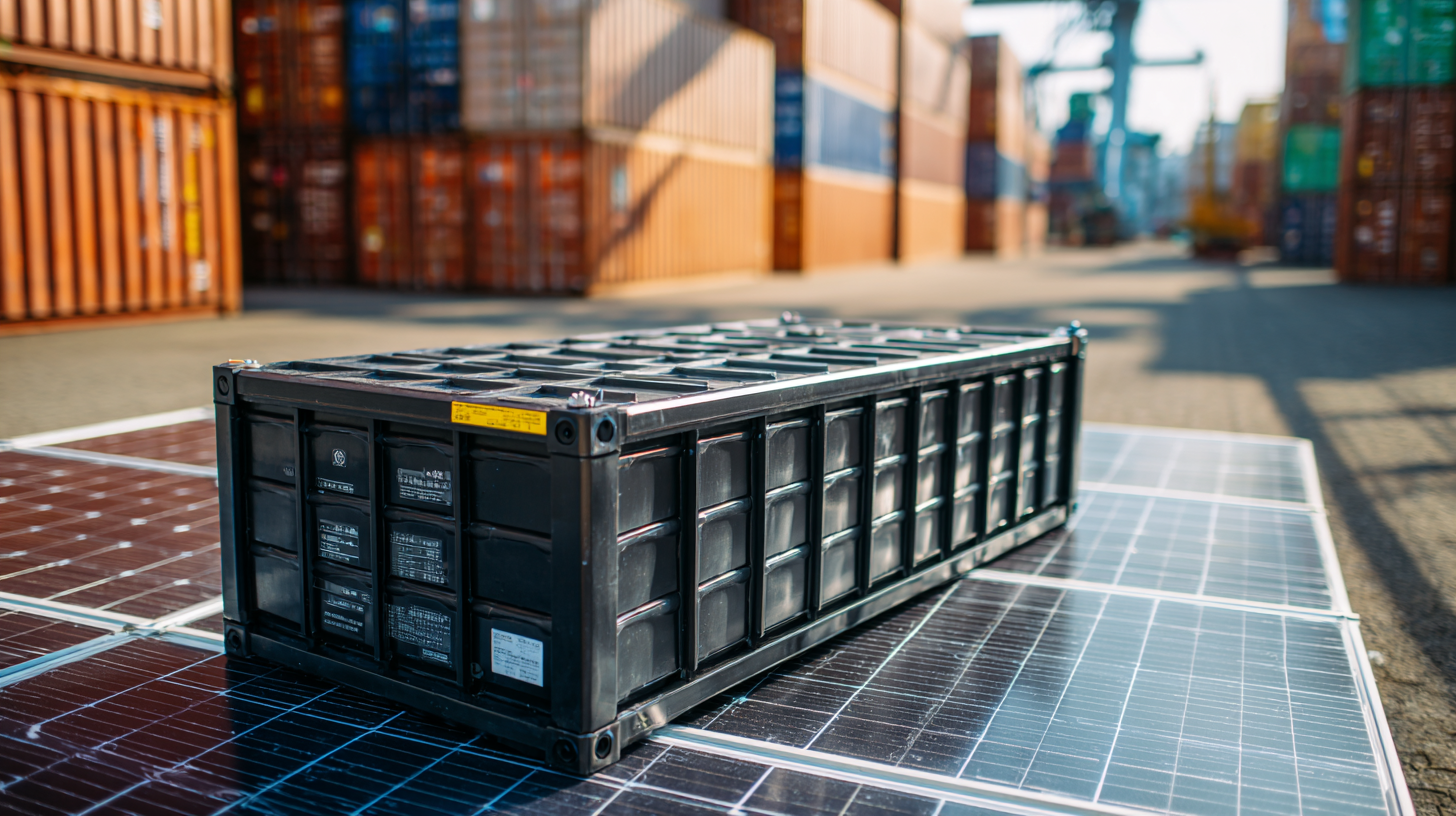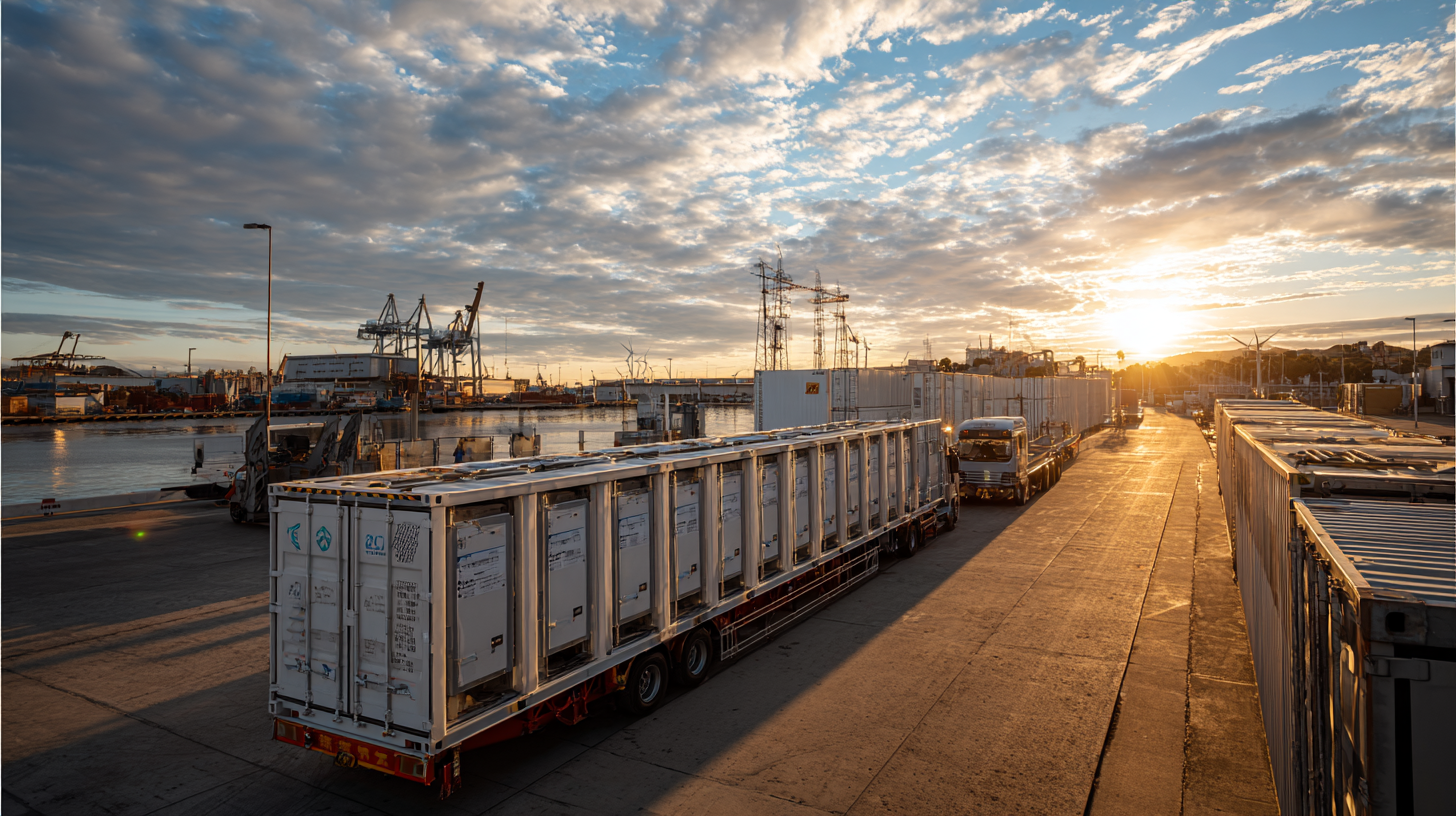Understanding the Benefits and Safety of Shipping Lifepo4 Batteries in Renewable Energy Applications
In the realm of renewable energy applications, the importance of safe and efficient logistics cannot be overstated, particularly when it comes to shipping lifepo4 batteries. These advanced lithium iron phosphate batteries are renowned for their stability, longevity, and environmental friendliness, making them a popular choice for energy storage solutions. However, the shipping process poses certain challenges that must be carefully navigated to ensure compliance with safety regulations and optimal performance upon arrival.
This guide aims to shed light on the various aspects of shipping lifepo4 batteries, including best practices, legal considerations, and strategies to mitigate risks during transport. By understanding the benefits and safety measures associated with shipping lifepo4 batteries, stakeholders can not only streamline their operations but also enhance the overall efficacy of renewable energy systems.
Benefits of Lifepo4 Batteries in Renewable Energy Solutions
Lithium Iron Phosphate (LiFePO4) batteries are rapidly becoming a cornerstone in renewable energy solutions due to their numerous advantages. One of the primary benefits is their enhanced safety profile compared to traditional lithium-ion batteries. According to a report by the International Renewable Energy Agency (IRENA), LiFePO4 batteries have a lower risk of thermal runaway, making them particularly suited for applications in solar energy systems where safety is paramount. This characteristic is especially beneficial in home energy storage systems, where reliability and longevity are critical for consumer confidence.
Beyond safety, LiFePO4 batteries offer impressive performance metrics that contribute to their growing popularity. With a lifespan exceeding 2000 charge cycles while maintaining over 80% capacity, they deliver significant cost advantages over time. A study by BloombergNEF estimates that the cost of energy storage using LiFePO4 technology can be reduced by up to 50% compared to conventional lead-acid batteries. Furthermore, their thermal stability allows for a wider temperature operating range, which is crucial for renewable energy installations exposed to varying environmental conditions. These benefits position LiFePO4 as a sustainable choice for powering both residential and commercial applications in the renewable energy sector.
Understanding the Benefits and Safety of Shipping Lifepo4 Batteries in Renewable Energy Applications
| Benefit |
Description |
Safety Rating |
Cycle Life (Years) |
Energy Density (Wh/kg) |
| Long Cycle Life |
Lifepo4 batteries can last for over 2000 cycles, making them highly durable. |
A |
5-10 |
90-120 |
| Safety |
Inherently safe chemistry with low risk of thermal runaway compared to other lithium batteries. |
A+ |
N/A |
N/A |
| Environmental Stability |
Stable performance under high temperatures and does not degrade quickly. |
A |
5-10 |
N/A |
| Low Toxicity |
Contains non-toxic materials, making it eco-friendly. |
A |
N/A |
N/A |
| Cost-Effectiveness |
Lower lifecycle costs compared to lead-acid batteries. |
B+ |
5-10 |
N/A |
Safety Protocols for Shipping Lifepo4 Batteries
When shipping LiFePO4 batteries, safety protocols are paramount to ensure both compliance with regulations and the protection of shipping personnel and the environment. According to the United Nations Manual of Tests and Criteria, specific guidelines categorize lithium batteries based on their performance during testing, impacting their shipping classification. LiFePO4 batteries, recognized for their stability and lower thermal runaway risk, are generally regarded as safer than other lithium-ion chemistries. However, adherence to guidelines from regulatory bodies such as the International Air Transport Association (IATA) and the U.S. Department of Transportation (DOT) is still crucial. These include stringent packaging requirements and labeling to indicate the potential hazards associated with lithium battery transport.
Furthermore, industry reports highlight the significance of proper handling and storage conditions during shipping. A study by the Battery Safety Council revealed that improper packaging was a contributing factor in 60% of reported shipping incidents involving lithium batteries. To mitigate such risks, shippers must ensure that LiFePO4 batteries are stored in protective cases, are not overcharged, and are shipped in a way that minimizes movement and potential damage. Compliance with these safety protocols not only reduces the risk of accidents but also fosters a safer environment, reinforcing the importance of robust safety management in the renewable energy sector.
Benefits of Shipping Lifepo4 Batteries in Renewable Energy Applications
Comparative Analysis of Lifepo4 and Other Battery Technologies
The comparative analysis of LiFePO4 batteries with other battery technologies highlights significant advantages, particularly in renewable energy applications. LiFePO4 batteries are renowned for their thermal stability, long cycle life, and enhanced safety. Unlike lithium-ion batteries that use cobalt or nickel, LiFePO4 chemistry results in lower risks of fire and thermal runaway, making them a safer option for integration into solar energy systems. Their ability to perform well in high temperatures further bolsters their appeal for renewable energy storage, where efficiency and reliability are paramount.
The growing adoption of LiFePO4 batteries is underpinned by the rising global demand for clean energy solutions. As the solar energy market is projected to reach $5.91 billion in 2024, the role of efficient and safe energy storage systems becomes pivotal. Additionally, the LiFePO4 battery market is expected to witness substantial growth, driven by increasing investments and technological advancements. By contrast, other battery technologies, such as traditional lithium-ion batteries, may not keep pace with the robust safety and performance standards set by LiFePO4, emphasizing the importance of ongoing research and implementation of superior battery technologies in sustainable energy applications.
Regulatory Standards for Transporting Lifepo4 Batteries
The safe transport of LiFePO4 batteries is crucial in renewable energy applications, especially as global reliance on lithium batteries continues to grow. Regulatory standards play a vital role in ensuring these batteries are shipped without posing significant risks. The U.S. Pipeline and Hazardous Materials Safety Administration (PHMSA) has recently updated its guidelines to address fire risks associated with lithium batteries, reflecting an increased awareness of safety measures in the industry. These guidelines are essential for manufacturers and transporters who must comply with strict regulations to protect both human lives and the environment.
Internationally, countries such as China are also establishing rigorous standards, like the new national standard for safe transport of traction lithium batteries. This reflects a broader trend where organizations, including airlines and energy regulators, are promoting safer practices for shipping and handling lithium-ion batteries. For instance, initiatives by the International Air Transport Association aim to educate both carriers and passengers on proper battery transport procedures, highlighting the importance of adhering to safe packing and labeling requirements. As regulatory frameworks evolve, it will be critical for stakeholders in the renewable energy sector to stay informed and compliant with these standards to mitigate risks effectively.

Best Practices for Storing Lifepo4 Batteries During Transit
When it comes to shipping LiFePO4 batteries, proper storage practices during transit are crucial to ensure safety and battery longevity. First and foremost, it's essential to maintain an optimal temperature range during transport. LiFePO4 batteries should ideally be kept between 15°C and 25°C to prevent thermal degradation. Utilizing insulated containers can help regulate temperature, especially in extreme weather conditions.
Additionally, securing the batteries to prevent movement is vital. This can be achieved by using anti-slip materials and ensuring proper packaging to absorb shocks during transit. It’s also advisable to keep the batteries at a partial charge, generally around 30% to 50%, as this state can help minimize the risk of damage while in transit.
Following these best practices not only enhances safety but also ensures that the batteries arrive in good condition, ready for deployment in renewable energy applications. Proper labeling is also essential to alert handlers to the contents of the shipment, further reducing the risks associated with transporting these powerful energy sources.












